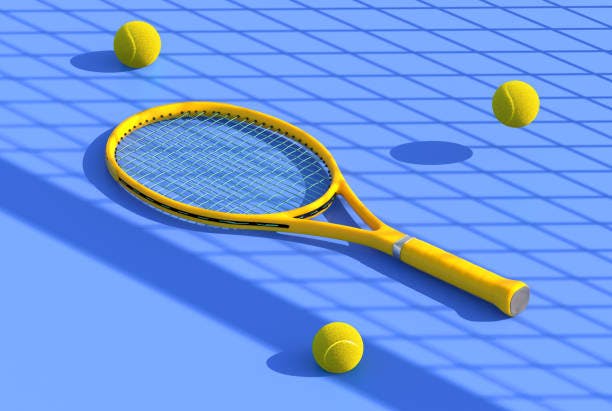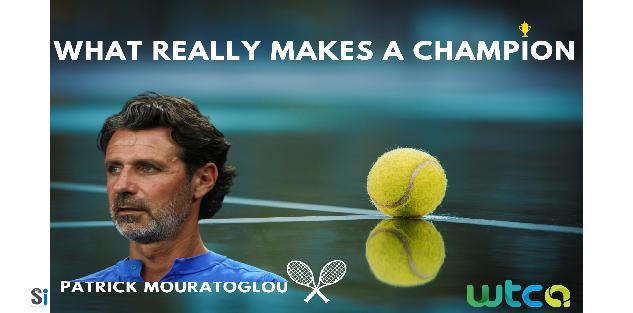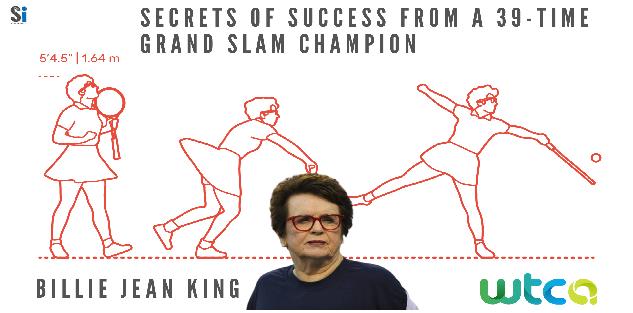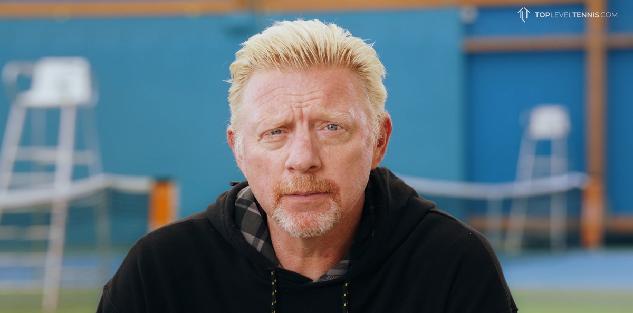Featured courses
- Four Tips to Turn Your Tennis Forehand Into a Weapon by Grant Young
- Tennis Legend Billie Jean King’s 4 Responsibilities as a Player by Grant Young
- Two Top Priorities For Success in Doubles Tennis by Grant Young
- Three of Tennis Whiz Lisa Dodson’s Tips to Improve Serves by Grant Young
- Three Elite Tennis Ball Machine Drills by Grant Young
- Three Keys For Correcting Tennis Serving Mechanics by Grant Young
- Five Tactical Tips to Win More Tennis Matches by Grant Young
- 4 Lessons Patrick Mouratoglou Learned From Coaching Serena Williams by Grant Young
- Four Effective Backhand Tennis Drills by Grant Young
- Two of Legendary Tennis Coach Paul Annacone’s Crucial Player Development Tips by Grant Young
- A Step-By-Step Guide To Mastering The Serve by Krsto Arsenijevic
- How to Dominate the Clay Court in Tennis by Krsto Arsenijevic
- 10 Essential Tennis Drills Every Coach Should Know by Brandon Ogle
- 8 Pre-Game Exercises to Prime Your Tennis Team for Competition by Neil Brown
- 7 Proven Tips To Develop Your Net Game in Tennis by Krsto Arsenijevic
- 10 Essential Tennis Drills Every Coach Should Know by Krsto Arsenijevic
- Developing Players - Two-handed backhand by Ramon Osa
- 6 Simple Warm-up Exercises For Tennis Players by Krsto Arsenijevic
- How to Beat a Serve-and-Volley Player by Krsto Arsenijevic
- How To Build Your Kinetic Chain Like Djokovic by Aiden Lefebvre
- How to neutralize a lefty in Tennis by Aiden Lefebvre
- 5 Tips To Improve Your Tennis Game Today by Krsto Arsenijevic
- Everything You Need to Know Before Buying New Tennis Shoes by Brandon Ogle
- Amp up your tennis practice with situational play by Neil Brown
- Tennis Equipment List by Brandon Ogle
- How to Master The One-handed Backhand in Tennis by Krsto Arsenijevic
- Modern High School Tennis Coaching Obstacles by Neil Brown
- Increase Your Tennis Fitness Level With 3 Easy Drills by Krsto Arsenijevic
- How to Successfully Hit a Two-Handed Backhand by Brandon Ogle
- How to Become a Grass Court Specialist in Tennis by Brandon Ogle
- How to Dominate the Hard-Court like Serena Williams by Brandon Ogle
- Hit a Drop Shot to Keep Your Opponent Off-Balance by Brandon Ogle
- New Tennis Injury Findings Linked to Neutral & Closed Stances by Oscar Wegner
- CHATTING WITH TENNIS PRO BRUCE CONNORS by Brandon
- How to Become a Mentally Strong Tennis Player by Brandon Ogle
- How to Win the Game of Angles by Hitting Cross-Court Shots by Eric Mahnke

Tennis Equipment List
- By Brandon Ogle
Former Tennis star John McEnroe once said, “I’ll let the racket do the talking.”
Tennis has been a widely popular sport across the entire globe for decades and differs significantly from some of the common team games, such as soccer and basketball. It requires concentration and confidence to overcome the opposition on the other side of the net. It takes guts to make a risky shot and endurance to withstand a long three set match. Ultimately, tennis has transformed into a game loved by many, both young and old. It can be played by everyone from those looking to play competitively in tournaments to people just looking for some exercise on a Saturday morning. As a result of its popularity, there is a wide range of equipment available to players to choose from ranging in options based on age, skill level or even competitive desires. Over the course of this article, I’ll take a deeper look at what to look for in tennis equipment to develop young players.
1. Tennis Ballsalls
It is a common misconception that young players can immediately use the regular sized yellow balls when first starting. For a number of reasons it can quickly have negative consequences, as the kids may quickly get tired of playing and bored with tennis. On Tennis Warehouse, there are three different sized tennis balls to choose from for youngsters. A red foam or felt ball is considered ideal for ages 5-8. It moves at a slower pace, thus providing more opportunity for longer volleys. By allowing for players to be a part of longer volleys, not only does their talent increase, but their confidence rises as they realize they can play the game successfully. The orange ball works best for 9-10 year olds, as it also travels slower but is suitable for a larger court. Finally, the green ball suits anyone between 11 years old and those ready to utilize a full-sized yellow ball. The ages listed for each are not strict guidelines, rather they can be used to gauge the skillsets of the child in terms of strokes and tactics.
2. Shoeshoes
In regards to the shoes for a junior player, it is best to get a pair that provides certain characteristics. First and foremost, they need to provide lightweight performance. Tennis is a game that requires constant movement and ability to change directions on the fly. Next, they need to allow for stability. Due to the fast-paced nature of the game, players are highly susceptible to sprained ankles and other lower leg injuries. Breathability is also immensely important. In most areas tennis can be played year round. While playing in 50-60 degree weather isn’t bad, competing in 90-100 degree weather can become intense. Having a pair of shoes that keeps air flowing to your feet can help to some degree. You’ll find the best quality tennis shoes from the brands Nike, Adidas, and Asics. Again, as with the racquets, you don’t have to get the most expensive pair at the start. Rather, you can get a more reasonable pair that also possesses some of the attributes listed above.
3. Apparelarel
While you can play tennis in regular athletic clothes, there is also a wide range of products available to make your kid look more like the Roger Federer’s and Maria Sharapova’s of the world. Whether it is polo’s, tank tops or compression shorts, you shouldn’t have much trouble finding something they like. There are not many suggestions I can provide for this category, rather I would just say to let your child pick out what they like and will feel most comfortable playing in.
4. Racketcket
Just like with the tennis balls, the racquets are also available in sizes that gradually grow as the child gets older and more accomplished in their tennis skills. For those 8 and under, anywhere between a 19”-23” racquet would be adequate. Meanwhile, those 10 and under would be able to use up to a 25” racquet. Appropriate sizing of the racquet makes it much easier for younger players to hit the ball back and forth. The sizing of the racquet is an important first step, but then the parent needs to help the child figure out the brand. Due to the popularity of the sport, there is a lot to choose from. Personally, I would recommend Wilson, Dunlop, Prince, and Babolat. It might be wisest to try a cheaper racquet initially before making a final evaluation of how much interest the child has in tennis.
Final TakeTake
Like every other sport, tennis can be very fun for kids if approached in the right way. As a parent, it is your job to set an infrastructure that allows them to take it for what it is – a game. By providing them with the proper equipment, they will become more interested and become more familiar with the game. Whether it is a racquet that fits the size of the child or a tennis ball that travels through the air slower to fit their skill level, the equipment they use will have a significant impact on developing their skills and love for the game.



